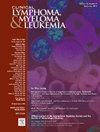SOHO国家的艺术更新和下一个问题急性髓性白血病:现状和下一个问题。
IF 2.7
4区 医学
Q2 HEMATOLOGY
引用次数: 0
摘要
在过去的4年里,对急性髓性白血病(AML)白血病发生机制的了解取得了进展,导致了新药的批准。正在进行的临床前研究预计将产生更多的靶向治疗,减少对传统化疗的需求,同时也增强分类系统和患者预后。在新诊断的AML中,诱导的主要方案仍然是7+3方案。在不适合的成年人中,venetoclax联合低甲基化剂已成为标准的治疗方法。在7 + 3方案中引入FLT3抑制剂改善了FLT3突变患者的预后。IDH抑制剂最近被批准用于医学上不适合的成人诱导。针对三胞胎方案的研究正在进行中。FLT3抑制剂和IDH抑制剂也已被批准用于复发和难治性AML。Menin抑制剂是另一类新型药物,目前正在研究用于新发以及复发和难治性AML。对于健康患者的巩固,只要可行,大剂量阿糖胞苷和同种异体移植仍然是主要的治疗方法。FLT3抑制剂已被研究作为同种异体干细胞移植后的长期维持。随着有效的治疗方案实现高质量的缓解,对检测可测量的残留疾病(MRD)和预测复发风险的敏感检测的需求将会增加。流式细胞术和分子方法的MRD监测在以阿糖胞苷为基础的治疗中是有效的,并且将对venetoclax治疗至关重要。根除MRD是AML亚群的关键目标,研究重点是靶向和基于免疫的治疗来消除MRD并通过克隆进化了解复发。同种异体干细胞移植是抵抗性急性髓性白血病残留白血病最有效的治疗方法,但受毒性和供体可用性的限制。基于免疫的策略,包括抗体和双特异性分子,在早期试验中显示出希望,更安全的细胞疗法可以扩大治疗选择。本文章由计算机程序翻译,如有差异,请以英文原文为准。
SOHO State of the Art Updates and Next Questions Acute Myeloid Leukemia: Current Status and Next Questions
Advances in understanding leukemogenesis in acute myeloid leukemia (AML) have led to new drug approvals in the past 4 years. Ongoing preclinical research is expected to produce more targeted therapies, reducing the need for traditional chemotherapy, while also enhancing classification systems and patient prognostication. In newly diagnosed AML, the mainstay of induction still is 7+3 regimen. In unfit adults, combination of venetoclax and hypomethylating agent has emerged to be the standard of care. Introduction of FLT3 inhibitors with the 7 plus 3 regimen has improved outcomes in FLT3 mutant patients. IDH inhibitors have recently been approved for induction in medically unfit adult. Studies focusing on triplet regimen are underway. FLT3 inhibitors and IDH inhibitors have also been approved for Relapsed and Refractory AML. Menin inhibitors are another novel class of drugs which are currently being studied for both de novo as well as relapsed and refractory AML. For consolidation in fit patients, high dose cytarabine and Allogenic transplant are still the mainstay of treatment whenever feasible. FLT3 inhibitors have been studied as long term maintenance after allogenic stem cell transplantation. As potent regimens achieve high-quality remissions, the need for sensitive assays to detect measurable residual disease (MRD) and predict relapse risk will grow. MRD monitoring using flow cytometry and molecular methods have been effective with cytarabine-based treatments and will be crucial for venetoclax therapies. Eradicating MRD is a key goal for AML subsets, with research focused on targeted and immune- based therapies to eliminate MRD and understand relapse through clonal evolution. Allogeneic stem cell transplant is the most effective treatment for residual leukemia in resistant AML but is limited by toxicity and donor availability. Immune-based strategies, including antibodies and bispecific molecules, show promise in early trials, and safer cellular therapies could expand treatment options.
求助全文
通过发布文献求助,成功后即可免费获取论文全文。
去求助
来源期刊

Clinical Lymphoma, Myeloma & Leukemia
ONCOLOGY-HEMATOLOGY
CiteScore
2.70
自引率
3.70%
发文量
1606
审稿时长
26 days
期刊介绍:
Clinical Lymphoma, Myeloma & Leukemia is a peer-reviewed monthly journal that publishes original articles describing various aspects of clinical and translational research of lymphoma, myeloma and leukemia. Clinical Lymphoma, Myeloma & Leukemia is devoted to articles on detection, diagnosis, prevention, and treatment of lymphoma, myeloma, leukemia and related disorders including macroglobulinemia, amyloidosis, and plasma-cell dyscrasias. The main emphasis is on recent scientific developments in all areas related to lymphoma, myeloma and leukemia. Specific areas of interest include clinical research and mechanistic approaches; drug sensitivity and resistance; gene and antisense therapy; pathology, markers, and prognostic indicators; chemoprevention strategies; multimodality therapy; and integration of various approaches.
 求助内容:
求助内容: 应助结果提醒方式:
应助结果提醒方式:


